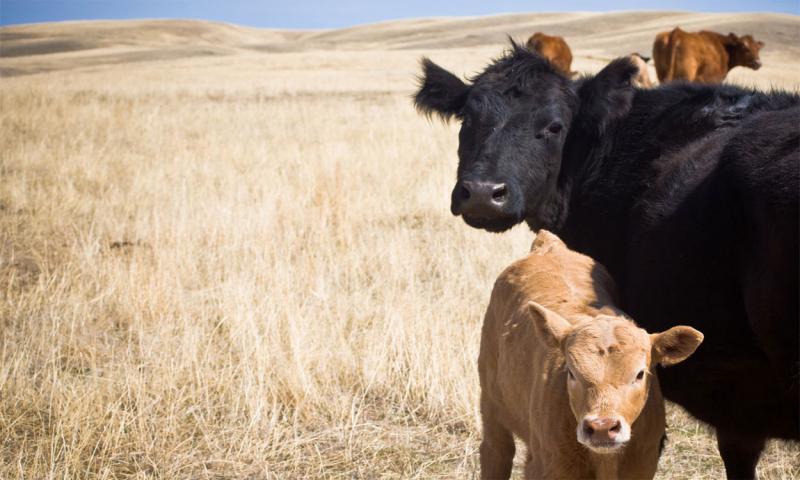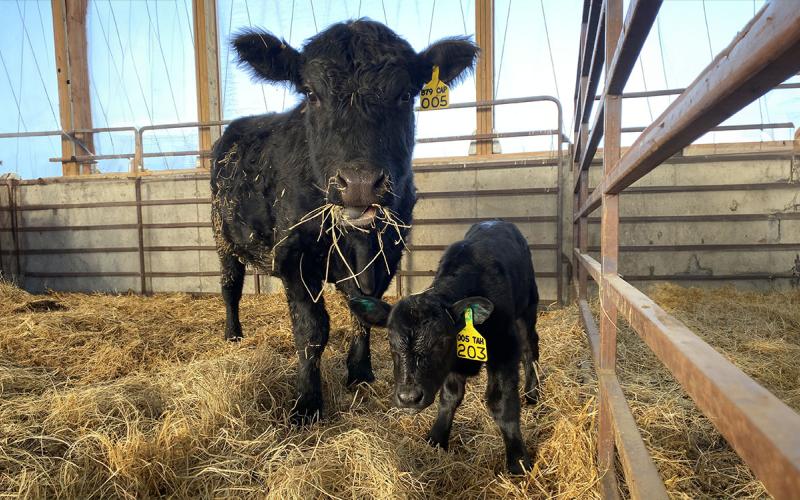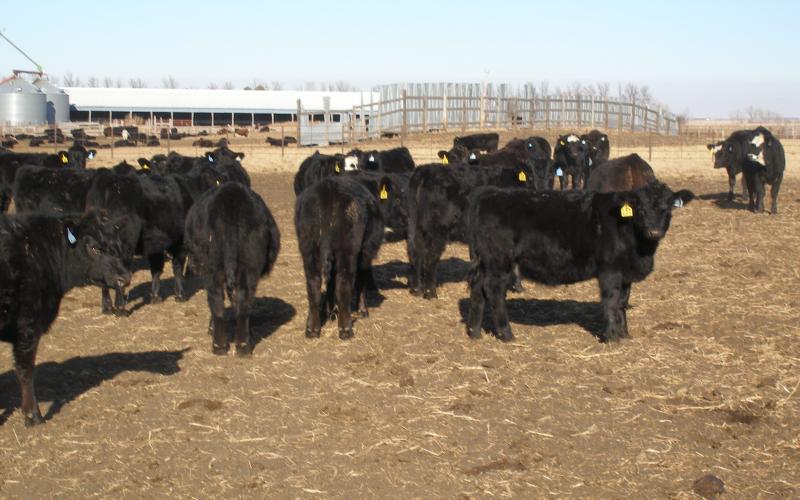
Originally written by Olivia Amundson, former SDSU Extension Cow/Calf Field Specialist, and Adele Harty, former SDSU Extension Cow/Calf Field Specialist.
Profitability on a cow/calf operation is influenced by multiple factors, including reproduction; however, the reproductive success of a herd is highly influenced by producer management. Knowing this, breeding season is a critical time of year for any cow/calf operation to focus on sound management decisions. Nutrition plays a vital role in the reproductive performance of cows, and reproductive success is the largest driver of income, while feed costs are the largest expense. Focusing management decisions on increasing reproductive performance while decreasing feed costs will help an operation see profitability. An open cow provides no additional income other than her salvage value minus the feed it took to get her to sale day. The goal post-calving and pre-breeding is to ensure that nutrient requirements of females are being met based on stage of production, age, weather conditions and current body condition score (BCS).
Forage Availability and Supplementation
The drier-than-normal conditions this year may present an added stress to the herd and producers in preparation for the breeding season. Research demonstrates that cows need to be in a BCS 5 prior to breeding, while heifers should aim for a BCS 6. Cows not meeting these requirements have decreased chances of becoming pregnant. This could cause an increase in late-bred or open cows at pregnancy check time, decreasing profitability and the ability to reach production goals.
Ninety days prior to calving is the last, economically feasible opportunity to add weight to a cow prior to calving before nutrient requirements increase due to lactation. During average years, spring forages provide adequate nutrients for lactating females. This year, considerations may need to be made when ensuring the herd is ready for breeding due to the dry conditions.
Considerations during a drier than normal year. It is important to know quantity as well as quality of forage resources to adjust stocking rates accordingly. Energy is typically the first limiting nutrient that may require supplementation in a dry situation. Nutrient partitioning occurs in the animal and if nutrients are limited, specifically energy, normal functions will be shut down. The severity of the deficiency will determine how the animal’s body will respond. The first function to be compromised with nutrient deficiency is reproduction, followed by lactation, with the final being the cow’s own ability to function being compromised. Therefore, the cow will use the nutrients to maintain herself first, then produce milk for the calf at her side and finally reproduce, if nutrients are adequate. Depending on individual conditions, providing an energy and/or protein supplement could benefit reproductive performance of your herd by meeting animal requirements. Consider talking to your state or regional nutrition extension specialist to determine the best supplement for your situation.
Managing Cows and Heifers in Dry Conditions
Look at this year as an opportunity to make strategic culling decisions to establish and define herd goals moving forward.
When culling cows, consider factors, such as cow age, efficiency, milk production, undesirable composition traits (bad feet, legs, udder, teeth) and temperament. With adequate records, compare cow size to weaning weight. Cows should be weaning calves near 40% of their body weight. If a cow is unable to do this, it may be an indication for her to head down the road.
When selecting bred heifers or replacement heifers, choose heifers that were born earlier in the calving season. These females are more likely to reach puberty and start cycling prior to those born later in the calving season. Heifers should be fed to reach 55–65% mature body weight by breeding. This year may be the opportunity to challenge those heifers and manage solely to 55% mature body weight by breeding. This will selectively cull females that require more maintenance in subsequent years. If artificial insemination is utilized on the operation, this is an opportunity to emphasize specific traits you want to see in your herd. Traits related to fertility, stayability and efficiency should all be taken into consideration when building a productive herd.
Early pregnancy detection followed by early weaning may also take additional stress off the cow and pasture in a dry year. Every four days a calf is not grazing equals one grazing day for the cow. Therefore, weaning 30 days early would mean one week of grazing for the cow. This could help extend grazing periods for the cowherd.
As Albert Einstein once said, “In the middle of difficulty lies opportunity.” This year with difficult scenarios to challenge management decisions, use it as an opportunity to refine your management strategies to reach your production and operation goals.


